 Iran’s Attack on Israel
Iran’s Attack on Israel


10 min read
Francesco Lotoro has dedicated his life to uncovering thousands of pieces composed in concentration camps.
As World War II raged across Europe and the globe, many of the millions of men and women who found themselves imprisoned in Nazi concentration camps, work camps and POW prisons were musicians, used to expressing themselves through music and song. “If you had one hundred men, you can be sure that ten of them likely would have been musicians – maybe five of them were professional musicians,” explained renowned Italian pianist, composer and conductor Francesco Lotoro in a recent Aish.com exclusive interview.
Countless prisoners composed music even under the most horrific circumstances during the darkest days of the Holocaust. Some penned short songs while others embarked on major works of opera or symphonies. For over thirty years, Francesco has made it his life’s work to collect these pieces of music and bring them to light. Today he is the primary figure preserving this incredible body of composition and he’s fighting to trace down the last vestiges of music written during the World War II period before it’s too late.
 Francesco Lotoro
Francesco Lotoro
Growing up in Barletta, a town in southeastern Italy, Francesco, now 56, was always interested in Jewish culture, even though his town had virtually no Jewish community. He studied music in Italy and in Budapest, and became an accomplished pianist, composer and conductor. In the late 1980s, he came across some remarkable musical entries in an Italian Musicians Encyclopedia. Some work by Jewish composers such as Victor Ullmann, Gideon Klein and others had been written not in rarified conservatories in Europe, but in Thereisenstadt, a Nazi concentration camp near Prague. This music was stunning and Francesco was transfixed. He began traveling to other camps to see if he could find still other compositions that were similarly penned secretly in Nazi camps.
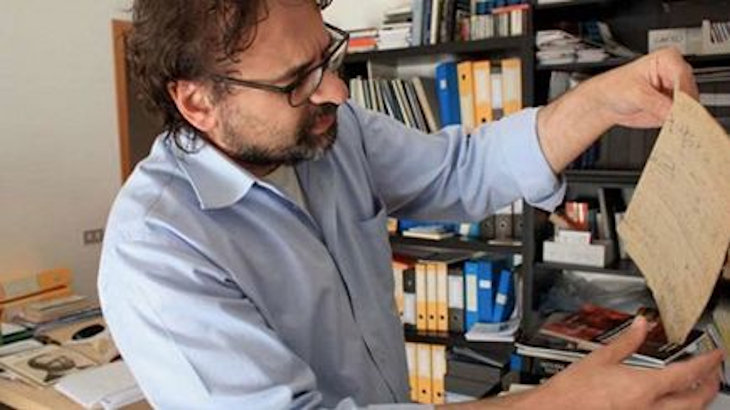
He visited libraries and museums where compositions written by prisoners were held, and often had to hand-copy compositions. Francesco has described that some of the music he’s found “was written in notebooks, on coal sacks, food wrappers, tickets.”
The more compositions Francesco found the more his passion grew. Though he was maintaining a busy schedule as a successful musician, Francesco devoted much of his spare time to tracking down compositions and to finding Holocaust survivors who could transmit music written in the camps to him. He was intrigued by these clandestine pieces, written by prisoners who longed to express themselves and somehow managed to maintain their artistic expression even while they were surrounded by death and pain.
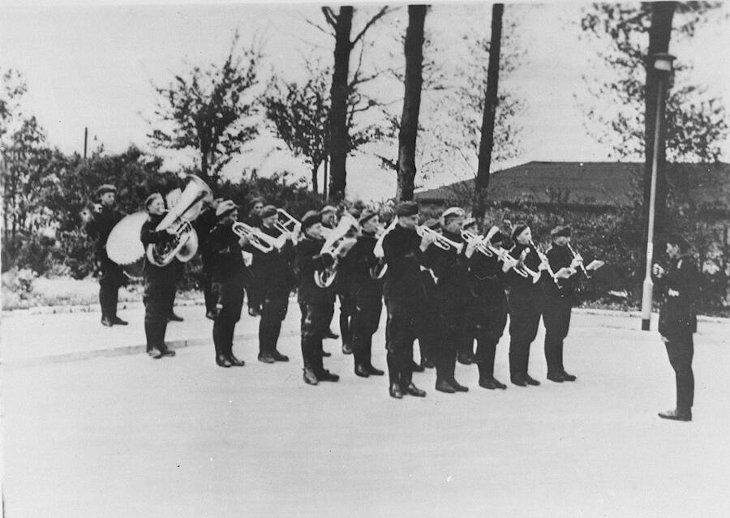 Gedenkstaette Buchenwald/United States Holocaust Memorial Museum
Gedenkstaette Buchenwald/United States Holocaust Memorial Museum
“I started in 1988 when I was very young,” Francesco says. “At the time the focus was to research and recover written mainly by Jews in concentration camps.” Francesco traveled to the sites of former concentration camps and to towns where Jews had lived during and after the Holocaust, looking for music that had been preserved or smuggled out of camps. He found scores in private collections and also met survivors who recalled music that they or that people they’d known had written while in concentration camps or other prisons. Some pieces were mere fragments, noted down on a scrap of paper. Others were longer compositions, using precious pieces of paper and improvised writing instruments.
 Reconstructed sheet music written on toilet paper and charcoal bags recovered from Nazi concentration camps during World War II.
Reconstructed sheet music written on toilet paper and charcoal bags recovered from Nazi concentration camps during World War II.
After a few years of focusing on only Jewish compositions, Francesco realized that many other groups turned to music to cope with imprisonment during this era too, and expanded his search. “I decided to expand this research to all music written by prisoners: Jews, Christians, Gypsies, Baha'i, Sufis, handicapped people, and all people who were in internment camps, concentration camps, forced labor camps, transit camps, also POWs in military camps…” He widened the era he was examining to span from 1933, when the Nazis first came to power and opened the Dachau concentration camp for political prisoners, until the death of Stalin in 1953. “We now have 20 years of music in the collection.” It’s a vast and varied treasure that Francesco is still adding to.
Filletti Anima Nostra
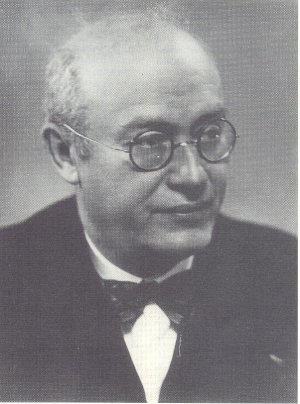 Rudolph Karel
Rudolph Karel
One haunting piece that Francesco spent years tracking down is a symphony by the Czech composer Rudolf Karel. Karel was arrested in 1943 for aiding anti-Nazi underground fighters and sent to Prague’s Pankrac Prison. Despite being tortured by the Gestapo and becoming very ill, Karel continued composing even in prison. When he came down with dysentery, he was given charcoal to chew to help with his symptoms. Instead, he used the precious charcoal to write music, writing on toilet paper. “You think a man who is very ill can spend two hours a day writing music in the infirmary?” denying himself lifesaving medicine, Francesco asks with wonder in his voice.
Karel hid his compositions and managed to smuggle them out of prison with the help of a friendly guard, hiding his compositions in the prison laundry. Later on, his music was discovered and Karel was sent to Thereisenstadt concentration camp, where he died of dysentery in 1945. Francesco managed to find pieces of Karel’s score for his symphony Nonet, written in Pankrac Prison, and helped complete this beautiful work. Francesco says that parts of the symphony sound “like a telegraph – ‘di-di-ti-ti-di-di-ti-ti’ – and at a certain moment I imagine this is a Morse code.”
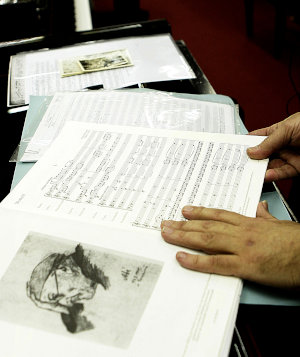 Lotoro showing a copy of music by Rudolf Karel, a Czech composer (in 1945 sketch at left) imprisoned by Nazis for helping the resistance in Prague.
Lotoro showing a copy of music by Rudolf Karel, a Czech composer (in 1945 sketch at left) imprisoned by Nazis for helping the resistance in Prague.
Another composer whose music Francesco helped rescue is Ilse Weber, a Czech Jewish poet who wrote beautiful lyrics in German. She was imprisoned in Theresienstadt which was meant to be a “model” concentration camp designed to show the world how well Nazis supposedly treated Jews. The camp had many opportunities of artistic expression. Francesco found some of her lyrics but they didn’t contain scores.
He was helped by Aviva Bar-On, a Czech-born Jew was imprisoned for three years in Theresienstadt as a teenager and knew Weber; she was even nursed back to health by Weber when she became sick. “They were very hard years of hunger, illnesses and epidemics,” Bar-On later recalled of her years in the Nazi camp. “But the musical life of the camp was very rich. There were famous opera singers and high-ranking musicians. There were lots of performances, and a women’s choir. We didn’t know about the gas chambers. When people received the order to go to the train we didn’t know where they were going,” she recalled.
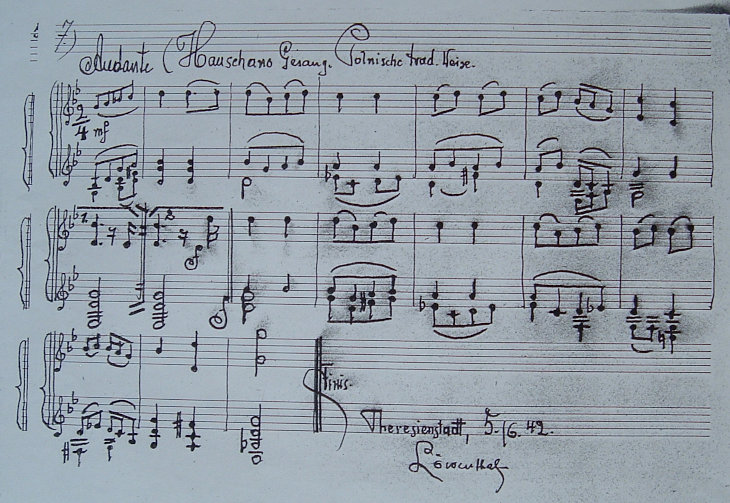
Bar-On remembered how Weber’s compositions sounded and sang them for Francesco, who transcribed them, bringing them back to life. In 2018, Bar-On, then 85 years old, performed some of Weber’s work in a concert in Jerusalem, with Francesco in attendance. The work he’d done to score Weber’s pieces allowed an orchestra to play her pieces for the first time in over seventy years.
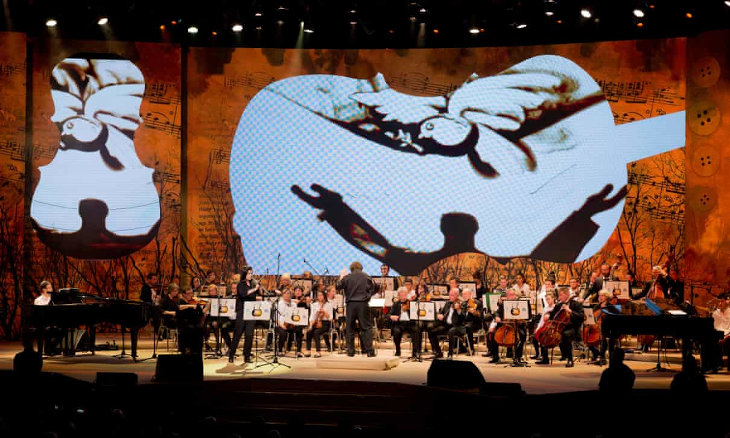 Francesco Lotoro conducting the Notes of Hope concert in Jerusalem, which featured 11 pieces of music created in Nazi concentration, forced labor and POW camps. Photograph: Mika Gurovich/JNF UK
Francesco Lotoro conducting the Notes of Hope concert in Jerusalem, which featured 11 pieces of music created in Nazi concentration, forced labor and POW camps. Photograph: Mika Gurovich/JNF UK
About twenty years ago, Francesco got in touch with the son of Aleksander Kulisiewicz, another musician who’d made it his life work to document and preserve music written in concentration camps. Francesco met Christoph who helped pass along much of his father’s research. Aleksander Kulisiewicz was a Polish composer who was imprisoned in the Nazis’ Sachsenhausen concentration camp for five years. He survived that hellhole, as well as a death march forced by the SS in 1945 as Soviet troops advanced nearby. As the war ended, Kulisiewicz was very ill and lay hallucinating in a Polish infirmary. HIs doctor was convinced he was dying, but a nurse realized that the words Kulisiewicz was feverishly saying were the words to songs, and started writing down what he was saying. Eventually she’d written hundreds of pages of lyrics. These were pieces composed by prisoners in Sachsenhausen with him, including over fifty of his own works.
The songs were incredibly moving. Some described life in concentration camps; others longed for home. Kulisiewicz eventually recovered and spent the rest of his life performing these and other songs written by concentration camp inmates. Today they reside in Francesco’s collection, along with about 8,000 other compositions he’s discovered as well as tens of thousands of other objects, including musical instruments that were used during the Holocaust.
Francesco began transcribing, playing and conducting many of the pieces he uncovered and recorded CDs of the music. In 2011, he issued KZ Musik: Encyclopedia of music composed in concentration camps 1933-1945, a 24 CD volume set that contains over 500 pieces of music composed in Nazi camps. He’s continuing to gather, transcribe, perform, and record music, and is currently working on an even larger collection. He’s also launched a “100 Journey” project, trying to raise funds to make a total of 100 trips to concentration camp sites, museums and elsewhere searching for Holocaust-era music. It’s easier to find precious musical scores than the funds to continue his research, Francesco notes.
This monumental musical project mirrored a deeper personal search in Francesco’s life. Raised as a Roman Catholic, he’d always felt drawn to Judaism. For years, however, he was only able to satisfy his desire to learn more through books. He’d voraciously read through hundreds of books and articles on Jewish subjects, learning all he could. Francesco even wrote to the Beit Din (Rabbinical Court) in Rome asking for help in converting to Judaism, but his initial requests didn’t lead anywhere. Instead, he lived a Jewish life as best he could, alone.
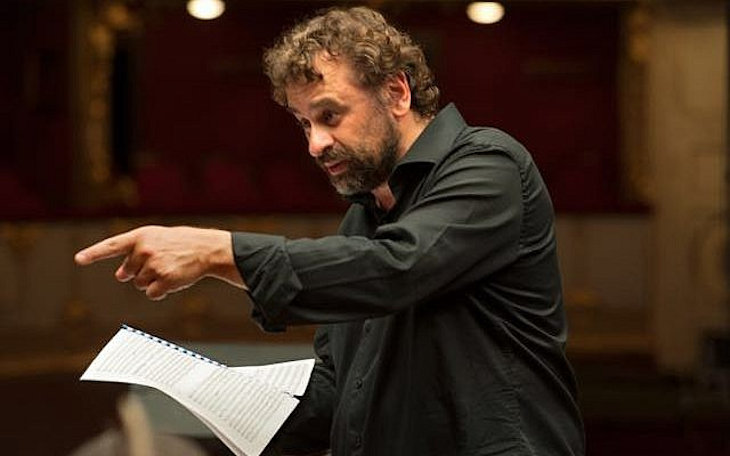
That changed in 2000, when he met Grazia Tiritiello, his soul mate who was also interested in Judaism. They married and talked about becoming Jewish together. Finally, in 2002, they reached out to Rabbi Shalom Bahbout, a member of the Beit Din in Rome. Rabbi Bahbout agreed to “follow us on the road for the conversion”. Francesco and Grazia worked with Rabbi Bahbout for two years, and in 2004 they had Orthodox conversions and became Jews. Francesco took the Jewish name Israel; Grazia became Sarah.
One of their first acts after converting was to have a Jewish marriage ceremony. Under the chuppah, the rabbi said something that Francesco will never forget. “He said you have a mission to give life to dry bones,” alluding to the prophet Ezekiel’s famous vision of dry bones once again coming to life (Ezekiel 37). Like a miraculous rebirth, Francesco’s project is allowing thousands of pieces of music to once again find listeners and come alive.
“So I am doing my duty,” Francesco explains. “For us, remembrance is a mitzvah. Zachor (the Hebrew word for remember) is a mitzvah.” With each new score he collects, he helps future generations understand the rich lives of those who experienced imprisonment during the Holocaust era.
Having collected thousands of artifacts, Francesco is also embarking on a major new project: building a new museum of concentration camp music in Barletta. Francesco started a foundation which has received national and regional funds; they’ve purchased a defunct distillery they plan to remodel as a museum that will contain thousands of scores, thousands of books and musical instruments that were used or created in camps by musicians. The museum will also house hundreds of hours of interviews with Holocaust and other survivors. Francesco is working on fundraising now and plans to begin work on the museum this year.
“This research is not mine,” he asserts; “this research belongs to all people – it belongs to all of us.”
Thanks to Francesco’s decades of work, much of this music has already been given new life, enriching us all and allowing the artistry of many composers who perished in the Holocaust to live on.
Erwin Schulhoff, Symphony No. 81 Satz
For more information or to contact Francesco Lotoro, visit: https://en.fondazioneilmc.it/francesco-lotoro
